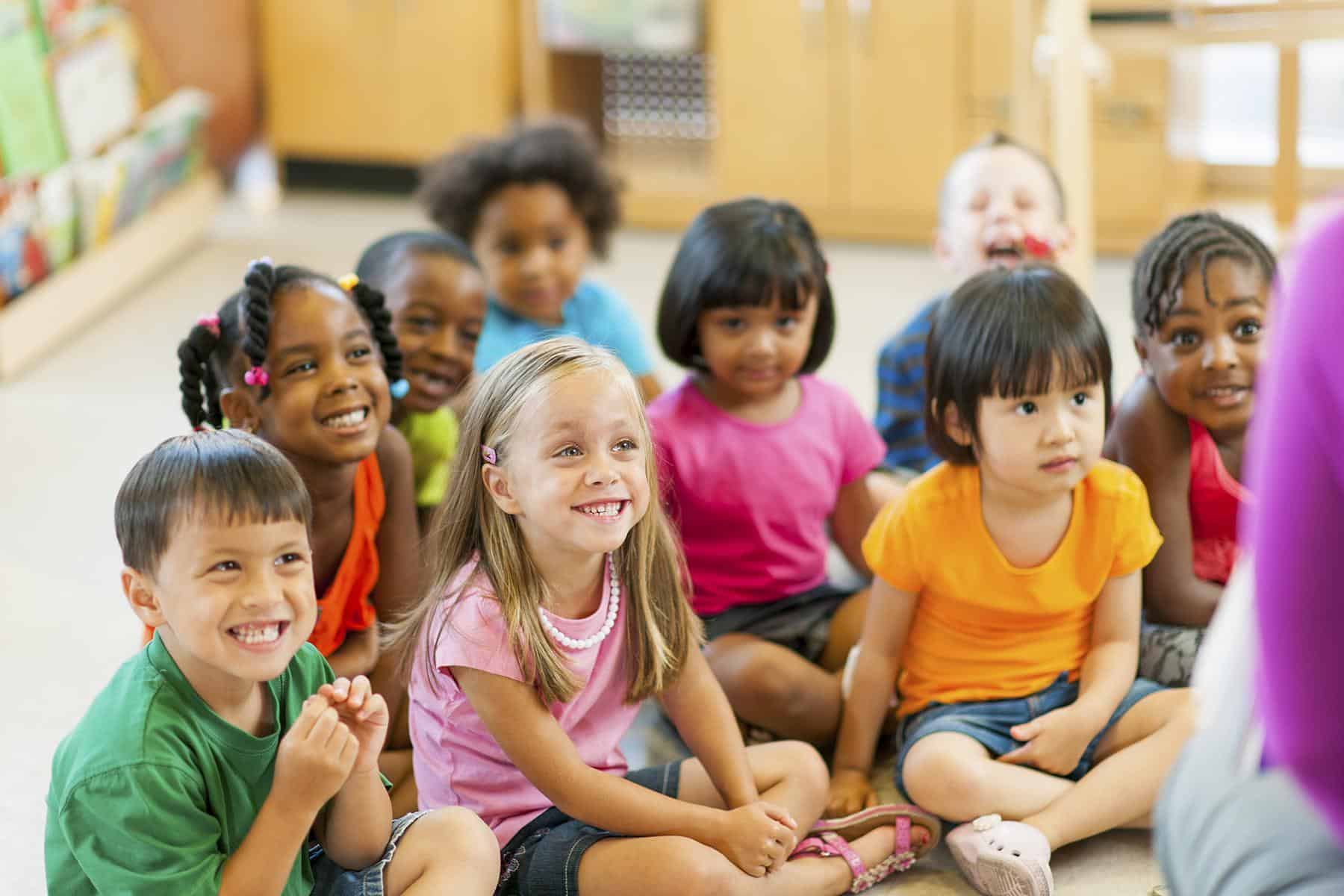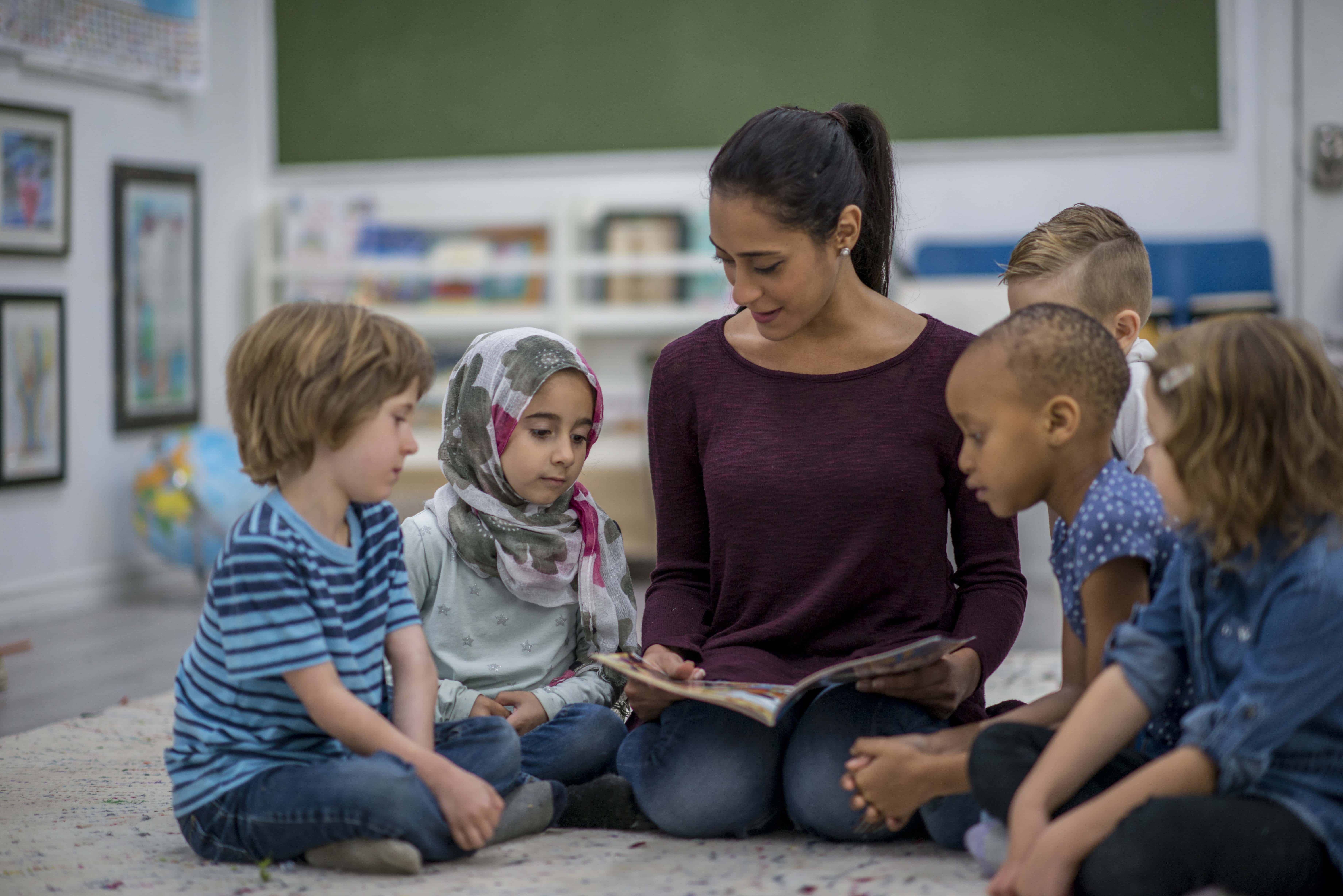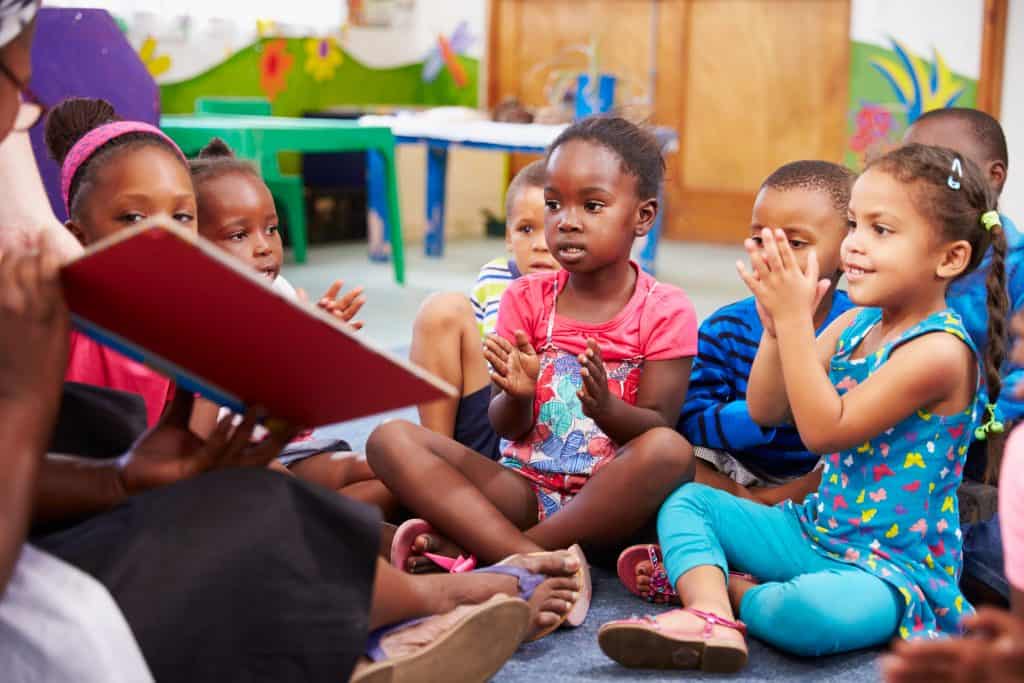Classrooms in the United States are more diverse—culturally and linguistically—than ever before.[15] Yet schools are often structured to exclude students from marginalized communities. In many cases, without even realizing it, educators plan their curriculum without considering whether it includes the diverse backgrounds and identities of their students.
That’s where culturally responsive teaching comes in. Culturally responsive teaching encompasses little steps like adding diverse books in your classroom library, as well as larger ones like adjusting your curriculum to include voices from marginalized communities.
In this guide, we’ll go over what culturally responsive teaching is and a few common barriers that prevent teachers from creating an inclusive classroom. Then, we’ll provide a few strategies for improving your cultural competency and even a starter list of diverse books to include in your classroom library or curriculum.
What is Culturally Responsive Teaching?
 Today, over 26 million students in the United States come from a marginalized background.[17] Over half of all US students identify as a race other than white, and 22% of all students speak a language other than English at home.[9,16] If educators are unaware how to teach and support multicultural students, they will fail to reach a significant portion of their school.
Today, over 26 million students in the United States come from a marginalized background.[17] Over half of all US students identify as a race other than white, and 22% of all students speak a language other than English at home.[9,16] If educators are unaware how to teach and support multicultural students, they will fail to reach a significant portion of their school.
But what, exactly, is culturally responsive teaching? Here, we’ll define it as instruction that reflects and supports students whose experiences and identities are usually excluded from the classroom. The goal is to create an inclusive classroom where students from all backgrounds feel safe and welcomed, as well as learn empathy for people with circumstances different from their own.
Bringing cultural diversity into your classroom instruction can revolutionize the learning experience for your students. For students from underrepresented backgrounds, culturally responsive teaching strategies can help them feel more comfortable in the classroom and improve school success. In fact, culturally responsive teaching can help reduce the achievement gap for minority students over time.[10] By prioritizing diversity and inclusion in class, educators can prepare every student to reach their potential.
Common Challenges to Promoting Diversity in the Classroom
As classrooms become increasingly diverse, culturally relevant teaching becomes all the more crucial. Yet as teachers seek to diversify their classroom, it’s common to run into barriers. For example, most teachers understand that having a culturally responsive classroom is important but lack strategies to implement it.[14] For this reason, many teachers do not feel confident in supporting students from diverse backgrounds—particularly if their native language is one that the teacher does not speak.[8]
Subconscious bias can also sometimes be a barrier to culturally responsive pedagogy.[11] Because inaccurate and hurtful stereotypes are so common in society, teachers may react based on biases that they aren’t aware of and that they don’t even agree with. As an example, non-white students are disproportionately assigned to special education classes, in part because teachers do not understand their differing cultural values or background.[3]
Also, many view culturally relevant teaching as a singular technique that, once integrated, will immediately solve the issues faced by diverse students. This, however, couldn’t be further from the truth. Cultural competence integration cannot be one-size-fits-all because every child is different and what helps or harms a student may vary depending on their background.[4] While there are some strategies that can improve a teacher’s cultural competency, it must be adjusted to your students’ unique circumstances.
Yet, there is hope: over 96% of elementary school teachers view culturally responsive teaching as important when working with diverse students.[7] The importance of cultural competency is clear, and any barriers can be overcome with self-awareness and the right strategies. Let’s go over a few ways that, when tailored to your students’ needs, can help you boost your classroom’s cultural competency.
How to Improve Your Cultural Competency as a Teacher

When it comes to cultural competence in education, personalization is key. If you approach culturally responsive teaching as a series of steps that will fix every issue, you won’t be able to support students in a way that fully grasps their cultures or circumstances.[5] Keep these tips in mind as guidelines that you can adjust based on your students’ individual needs.
First, consider your privilege and be mindful of any subconscious biases.[11] If you find yourself thinking or acting in a way that relates to a stereotype you may not even hold, adjust your behavior away from said bias. View the different cultures your students belong to or languages they speak as a positive, inherent part of their identity.[12] If you’re not from a marginalized background, talk to colleagues who are for suggestions on how to better approach diversity in your classroom and confront hidden biases.
Throughout the school year, develop personal relationships with your students and their parents that go beyond just teaching them reading or math.[2] Every student’s story is different, and as you get to know them, you’ll be able to teach in a way that’s more mindful of their experiences. Regular communication with their parents can also allow you to ask questions about how to best adjust your teaching strategy to a child’s background or circumstances.
And finally, learn about and plan activities that reflect the diversity in your classroom.[13] As you get to know your students on a personal level, include lessons that reflect their different heritages, cultures, and backgrounds.[3] It can make a world of difference for students to have stories, lessons, and activities that reflect their experiences. By diversifying your curriculum, you can make sure that every child has a place in your classroom and can develop empathy for people from different circumstances than their own.
15 Children’s Books about Diversity to Promote a Multicultural Classroom
Bringing cultural responsiveness into your classroom can be a long-term process. As you make small steps each day, however, they will add up and lead to a more inclusive classroom.
One simple yet profound way to help every child in your classroom feel like they belong is adding diverse books to your class library. We’ve put together a list of 15 books about characters from diverse backgrounds to stock your classroom with stories that reflect a variety of perspectives.
Picture books for early elementary students:
- Drawn Together by Minh Lê, illustrated by Dan Santat
- Fry Bread: A Native American Family Story by Kevin Noble Maillard
- Hosea Plays On by Kathleen M. Blasi
- Plenty of Hugs by Fran Manushkin, illustrated by Kate Alizadeh
- Jabari Jumps by Gaia Cornwall
Chapter books for older elementary and middle school students:
- I Can Make This Promise by Christine Day
- Amal Unbound by Aisha Saeed
- Roll of Thunder, Hear My Cry by Mildred D. Taylor
- 1001 Cranes by Naomi Hirahara
- Hurricane Season by Nicole Melleby
YA books for high school students:
- Girl in Translation by Jean Kwok
- When I Was the Greatest by Jason Reynolds
- The Hate U Give by Angie Thomas
- Monsoon Summer by Mitali Perkins
- Aristotle and Dante Discover the Secrets of the Universe by Benjamin Alire Sáenz
For more recommendations, check out the NYC Reads 365 list, released and updated annually by the Department of Education, to find diverse reads for PreK-12 students.
Sources:
- Gay, G. Preparing for Culturally Responsive Teaching. Journal of Teacher Education, 2002, 53(2), pp. 106-116.
- Brown, D.F. Urban Teachers’ Professed Classroom Management Strategies: Reflections of Culturally Responsive Teaching. Urban Education, 2004, 39(3), pp. 266-289.
- Gay, G. Culturally responsive teaching in special education for ethnically diverse students: Setting the stage. International Journal of Qualitative Studies in Education, 2002, 15(6), pp. 613-629.
- Wlodkowski, R.J., and Ginsberg, M.B. A Framework for Culturally Responsive Teaching. Educational Leadership, September 1995, 53(1), pp. 17-21.
- Pewewardy, C., and Hammer, P.C. Culturally Responsive Teaching for American Indian Students. December 2003. https://files.eric.ed.gov/fulltext/ED482325.pdf.
- Gay, G. Teaching To and Through Cultural Diversity. Curriculum Inquiry, 2013, 43(1), pp. 48-70.
- Phuntsog, N. Culturally Responsive Teaching: What do selected United States elementary school teachers think? Intercultural Education, 2001, 12(1), pp. 51-64.
- Siwatu, K.O. Preservice teachers’ culturally responsive teaching self-efficacy and outcome expectancy beliefs. Teaching and Teacher Education, October 2007, 23(7), pp. 1086-1101.
- National Center for Education Statistics. Indicator 6: Elementary and Secondary Enrollment. February 2019. https://nces.ed.gov/programs/raceindicators/indicator_rbb.asp.
- Griner, A.C., and Stewart, M.L. Addressing the Achievement Gap and Disproportionality Through the Use of Culturally Responsive Teaching Practices. Urban Education, 2013, 48(4), pp. 585-621.
- Matias, C.E. Check Yo’self before You Wreck Yo’self and Our Kids: Counterstories from Culturally Responsive White Teachers? . . . To Culturally Responsive White Teachers! Interdisciplinary Journal of Teaching and Learning, 2013, 3(2), pp. 68-81.
- Gonzalez, V. Culturally Responsive Teaching in Today’s Classrooms. National Council of Teachers of English. January 2018. https://ncte.org/blog/2018/01/culturally-responsive-teaching-todays-classrooms/.
- Kozleski, E.B. Culturally Responsive Teaching Matters! The Equity Alliance at ASU. January 2010. https://files.eric.ed.gov/fulltext/ED520957.pdf.
- Edwards, S., and Kuhlman, W. Culturally responsive teaching: do we walk our talk? Multicultural Education, 2007, 14(4), pp. 45.
- Ford, B.A., Stuart, D.H., and Vakil, S. Culturally Responsive Teaching in the 21st Century Inclusive Classroom. Journal of the International Association of Special Education, 2014, 15(2), pp. 56-62.
- The Annie E. Casey Foundation Staff. The Number of Bilingual Kids in America Continues to Rise. January 2018. https://datacenter.kidscount.org/updates/show/184-the-number-of-bilingual-kids-in-america-continues-to-rise.
- Digital Promise Global Staff. The Growing Diversity in Today’s Classroom. September 2016. https://digitalpromise.org/wp-content/uploads/2016/09/lps-growing_diversity_FINAL-1.pdf.

